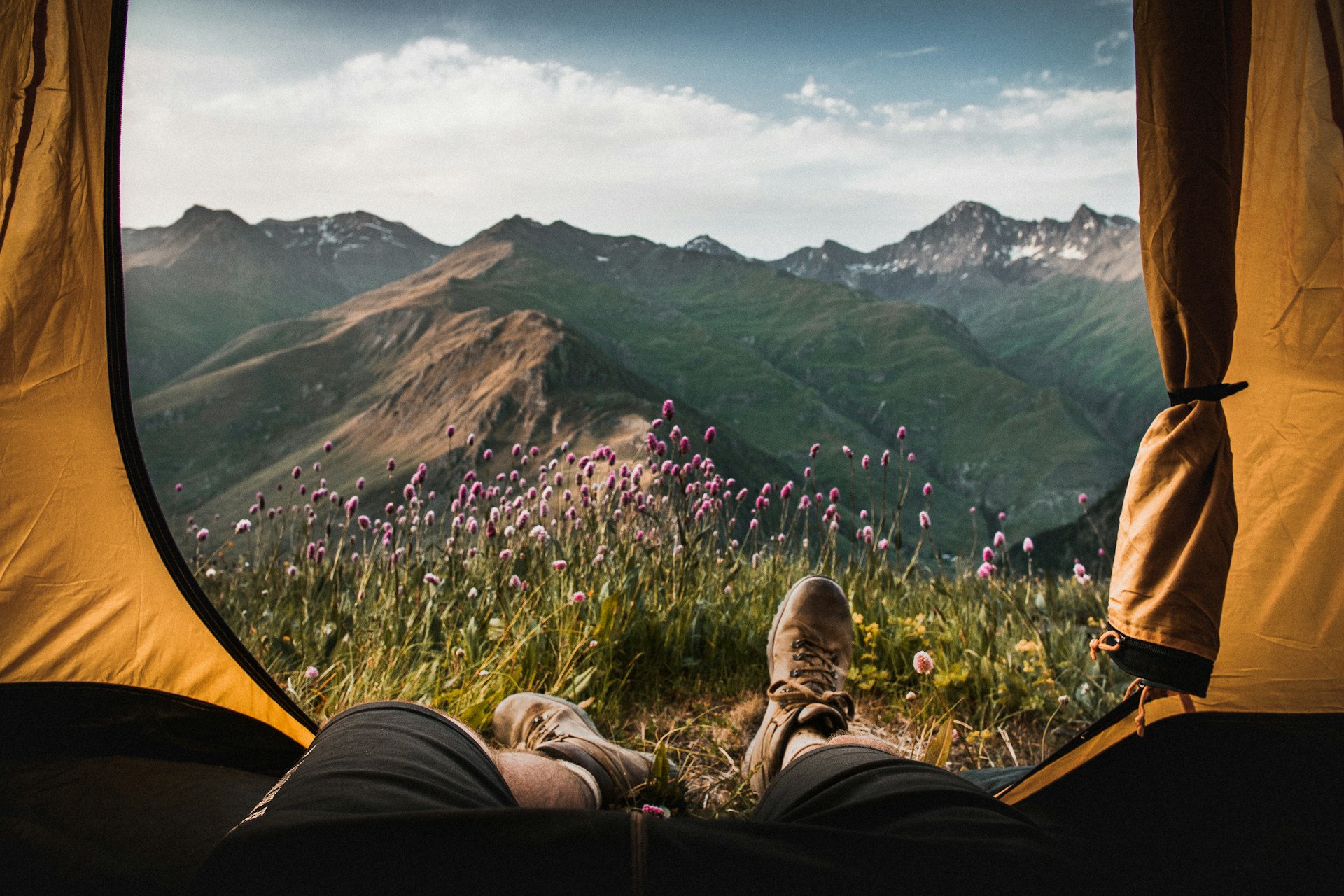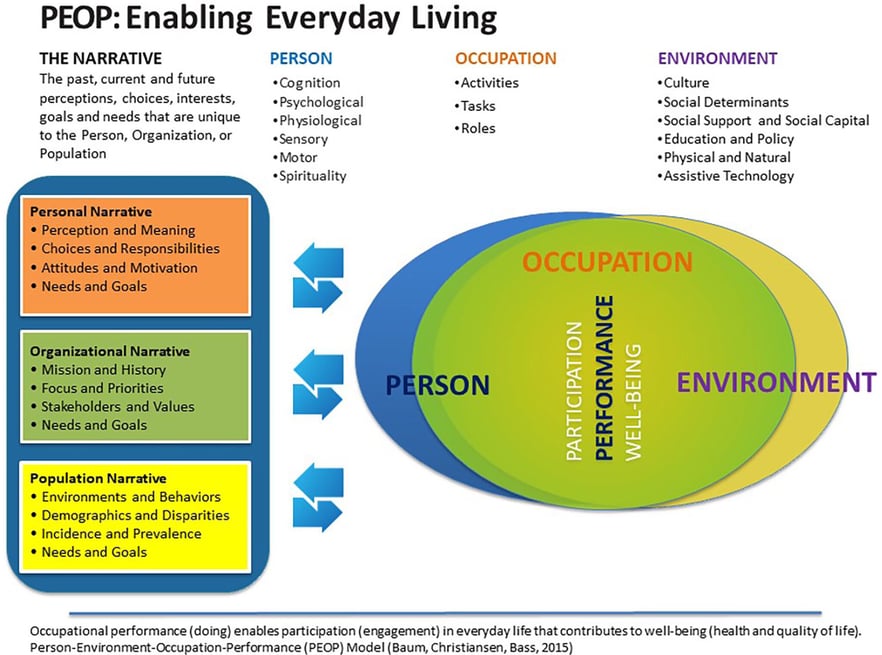
THEORY & MEANING
Person Environment Occupational Performance model (PEOP)
What is a "theory" in occupational therapy?
Applied theories and models can be defined as, " a supposition or a system of ideas intended to explain something" (Merriam-Webster. (n.d.). Occupational therapists (OT) are licensed clinical health professionals who provide evidence-based services grounded in theoretical basis (AOTA, 2020). These multifaceted theories provide health professionals with clinically sound and client-centered advice on implementing and justifying interventions and investigating the practical use of occupational therapy in a wide range of settings (Seymour, A., & Boniface, G., 2012). Specifically, occupational therapy theory focuses on theories directly impacting human occupation and blends humanistic and existential theory to form the basis of the client-centered approach in OT practice (Cole & Tufano, 2020).
In this section we will be focusing on the theory of occupation through the lens of the Person-Environment-Occupation-Performance Model (PEOP)


Person-Environment-Occupation-Performance Model (PEOP)
The Person-Environment-Occupation-Performance model (PEOP) was developed by Charles Christiansen and Carolyn Baum in 1997 and explores the complex nature of occupational performance. The PEOP model explores a top-down client-centered approach to address specific strengths and barriers in the transactional relationship between an individual’s environment, occupational performance, participation, and well-being (Baum et al., 2015). The PEOP theory provides a dynamic lens to gather information from the person's experience, environmental impact, and performance needs to improve people's engagement in the occupation of camping. Using the PEOP lens, I gathered, analyzed, and synthesized data to facilitate the appropriate materials in this website to properly educate and advocate safe camping techniques to the aging community. This theory was crucial in guiding the website and strategies to create safe, accessible, and comfortable camping experiences when aging.


Occupational Justice
Occupational justice ensures fairness, respect, impartiality, and equitable opportunity to comfortably engage within one's environments and occupations (AOTA, 2020). Regardless of age, ability, gender, class, or any differences, every person deserves an inclusive and accessible camping environment to experience and enjoy the great outdoors safely.
This website provides modifications, adaptions, and alternatives to the camping experience to allow people to fully immerse in the camping experience without giving up safety and accessibility. There is no right or wrong way to camp. So, with the provided resources, I hope you feel more educated, confident, and open-minded about camping outdoors to absorb Earth's natural benefits. Find the camping type that fits you best and use available resources to get the trip moving forward!


